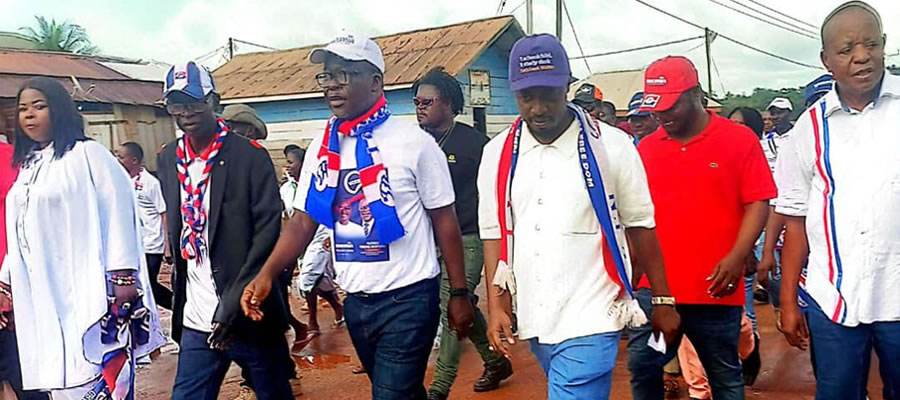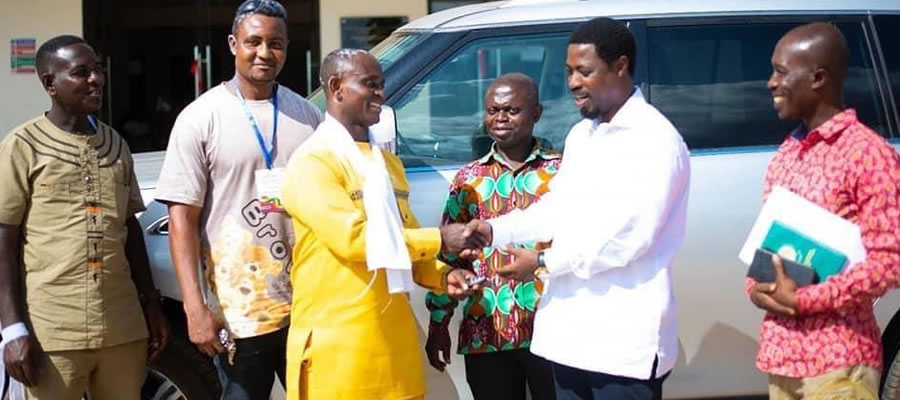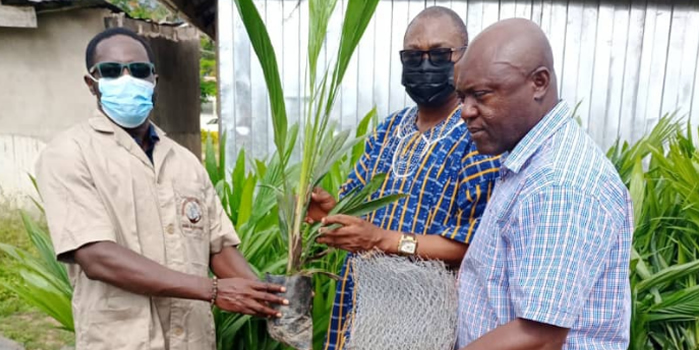

PRIORITIZATION OF DEVELOPMENT ISSUES
Introduction
On the basis of the summarised key development issues identified from the previous chapter, the MPCU undertook the following activities to determine prioritised development issues for 2018-2021. This chapter highlights the steps that were taken to determine the prioritized development issues of the BABDA for 2018-2021
The community needs and aspirations identified in through needs assessment have been harmonized with the summarized key development issues from the analysis of the current situation and performance review. Thus, each of the needs and aspirations of the communities have been matched against the summarized key development issues to determine the level of relationship between the two and scored. The criteria for the harmonization is as follows;
Harmonised Key Development Issues under the GSGDA II with Implications For 2018-2021
Below is the summary of key development problems/issues of the Municipality identified from harmonisation of community needs and aspirations and key development issues and presented in a matrix under GSGDA II as indicated Table 2.3.
For continuity of relevant on-going programmes, the District harmonised the issues associated with the programmes and projects commenced under GSGDA II 2014-2017 with those issues of the NMTDPF 2018-2021 under the LTNDP 2018-2057. The results/outcomes of the harmonisation is the determination of their relationships in terms of similarity for the adoption of goals and issues for the 2018-2021 DMTDP. The adopted goals and issues for the DMTDP are presented under the five thematic areas of the NMTDPF 2018-2021 as indicated in Table 2.4.
Analysis of Key Potentials, Opportunities Constraints and Challenges (POCC)
This section tries to subject the adopted issues to the analysis of the Potentials, Opportunities, Constraints and Challenges (POCC) of the district so as to understand how the main problems or issues identified can be addressed to enhance development of the Bibiani-Anhwiaso-Bekwai Municipal to better the lives of the people.
The Municipality abounds in numerous potentials and opportunities but there are constraints and challenges that need to be overcome to increase the pace of development. The potentials and opportunities as well as the constraints and challenges for the development of the Municipality were identified and analysed at the Municipality level through stakeholder consultations, especially during first public hearing and meetings with the area councils. The details of the POCC analysis based on the NMTDPF 2018-2021 thematic areas and goals are indicated in Table 2.5-2.8.
Summary of POCC Analysis
List of Development Potentials
The potentials of the Municipal Assembly refer to factors, advantages and resources within the Municipality which when utilised or tapped can enable the Municipality to overcome its challenges or to enhance its socioeconomic development. The Municipality is endowed with many potentials for any meaningful development to take place. The potentials of the Municipality are as follows:
Available fertile land for agricultural purposes
• Presence of abundant sand, stones, gravels, wood and water for construction purposes
• Assembly’s internally generated fund
• Presence of mineral deposits
• Availability of rateable property that are to be taxed
• Presence of main decentralised departments
• Presence of dedicated and competent DA technical staff
• Large population and the location of the district that serve as potential market
• Presence of electricity from national power grid
• Presence of sub-district structures which could be used to assist with dissemination of DA policies and revenue mobilization
• Presence of tourist attraction sites
• Available forest and forest products
• High communal spirit, peace and security
• Presence of security agencies/courts
• Presence of financial institutions/ banks
• Presence of Senior High Schools/College of Health Science that could be used as basis for human resource development
• Presence of local FMs and good TV signals
• Presence of mobile telecommunication networks
• Presence of hospitals and other health health facilities and NHIS
• Presence of BAC and RTF
• The one main first class road linking the district to Kumasi and Takoradi
List of Development Opportunities
Opportunities are external factors beyond the district that positively influence development in the district. They include:
Access to government interventions such as DACF, GETFund, EDIF, DDF, MDF
• Selection of the district for IPM Technology, One District-One Factory, Planting for Food and Jobs, One Constituency-One Million Dollars, CODAPEC, National Aforestation Programme, the Capitation Grant, School Feeding Programme, LEAP, Ghana AIDS Programme, Free uniforms and exercise books
• Support from Donors such as DANIDA, USAID, DFID, EU, IDA, OPEC Fund, UNDP, CWSA, WHO, IFAD, UNICEF, SNV, GIZ, etc
• Government Initiative to set up farmer based organizations, Community Based Apprenticeship Schemes, ICCES, YEA, M-SHAP
• Good climatic conditions
• Decentralisation policy
• Establishment of MoCGSP and access to NCWD, WILDAF, FIDA, WAJU, CHRAJ, Disability ACT
• Presence of NGOs in the country
• Various statutes on decentralization, Child Rights, Interstate succession law
• Co-operation from private sector organizations like PROTOA and GPRTU
• Timber firms and mining companies that support community development programmes
• Government policy on PPP
• Other MDAs programmes
• Free SHS policy
Most of these opportunities are being utilised for the benefit of the people in the Municipality. However, the level of utilization is very low and therefore calls for more efforts by the Municipality Assembly to use most of them in the course of the plan period.
List of Development Constraints
Constraints
Constraints are disadvantages emanating from internal factors such as institutional, human and physical resources that act against development. The key development constraints of the Municipality include:
Poor nature of feeder roads
Low income among the inhabitants
High population growth rate
Environmental pollution
Non-functioning of the sub-district structures which could be used to assist with dissemination of DA policies and revenue mobilization
Inadequate avenues for skills learning
Presence of unemployed and underemployed
Low competency among master artisans
Low internally generated funds
Poorly resourced decentralised departments
Weak institutional co-ordination.
Inadequate data base for revenue mobilization
Weak DA capacity to enforce bye-laws
Bad attitude towards HIV/AIDS
Difficulty in accessing credit
High illiteracy rate and unskilled labour
Low diffusion of technology among producers
Low women participation in decision-making
Poorly developed industrial and private sector
Inadequate personnel and general logistics of Municipal Assembly (Central Administration)
List of Challenges
Challenges are external factors or obstacles beyond the Municipality that may hamper or militate against the smooth execution of development programmes and projects. The major ones identified in the Municipality are:
• Heavy rainfall that spoils the roads frequently
• In-migration of large number of unskilled labour
• Undulating topography of some parts of the Municipality
• Harmattan (climate change effects)
• Capital flight
• Inadequate financial and logistical support from Government of Ghana and Donors
• Government’s inability to effectively decentralize
• Delay in the release of Government and donor funds
• Low investor interest/confidence to invest in the Municipality
• Dispersed nature of settlements in the Municipality that hampers delivery of certain development projects to some communities because they lack the minimum population for accessing such services
• High humidity
• High water table which at times make it unsafe and difficult to site sanitary facilities at certain places
• High cost of inputs
• Fewness of other public sector organizations in the Municipality Fewness of banking institutions
• Lack of producer prices for other crops apart from cocoa and coffee
• High cost of employable skill training
• Absence of Ghana Tourist Board in the Municipality
• High cost of construction
• Unreliable electricity supply
• Poor performance of contractors
DEVELOPMENT PROJECTIONS, ADOPTED GOALS, OBJECTIVES AND STRATEGIES
Introduction
In this chapter, the development issues were linked to four of the five goals of the National Medium Term Development Policy Framework (NMTDPF) 2018-2021 and prioritized. In this chapter, the development focus of the BABDA has been established and a clear district goal consistent with the MTNDPF 2018-2021 has also been stated. The chapter also includes development projections for 2018- 2021. Relevant policy objectives and strategies have also been adopted from the NMTDPF 2018-2021 to achieve the objectives of the Municipality and national goals.
Development Projections of the District for 2018 -2021
This part looks at the current and future needs of the Municipality for the period 2018-2021. The needs were derived from the POCC analysis and the population projections.
Population Projections
Population is the single most important factor for the distribution of development programmes among various groups of persons particularly for the distribution of social services. Population projections are crucial in development planning decisions.
Generally, assumptions under population projections affect investment decisions on schools, hospitals and roads as well as power, water and sanitation supplies. Clearly, the supply of these facilities are restricted to age group, both aggregate and desegregation (according to age, sex, occupation, etc) of the population.
The projected population of the Municipality serves as the basis for estimating service requirement of health, water, education etc. up to the end of the plan period 2021. They form the basis for the planning and programming phase of the development plan. The Municipality population is projected by using the exponential method based on the absolute figures and age distribution figures for the Municipality in 2010 Population and Housing Census.
The assumptions made about the projections are:
• The ratio of the district population will grow at a constant rate throughout the plan period.
• The district’s growth rate (of 1.8%) will remain almost the same or will not change much up to the year 2021.
• Child mortality rate records in the district will reduce further or not change during the plan period.
• Also, the life expectancy at birth for both male and female in Ghana of 61/64 years remains the same till 2021.
• Migration rate in the district will remain unchanged during the plan period.
• The age-cohorts of the district will not change much during the period.
Tables 3.1 and 3.2 present the projected population, sex composition and age groups of the BibianiAnhwiaso-Bekwai Municipal respectively.
Figure 3.1: Population Projection Map for 2014-2017
DEVELOPMENT PROGRAMMES
Introduction
Chapter three outlined the adopted National Objectives and Strategies to achieve them in order to address the problems and gaps in the earlier chapter. Chapter four discusses the District’s Development Programmes and Sub-Programmes for the planned period covering Economic Development, Social Development, Environment, Infrastructure and Human Settlements Development. The rest include Governance, Corruption and Public Accountability and Ghana and the International Community. Also included in the chapter is the Indicative Financial Flan.
Broad District Development Programmes
For the Municipality to address the development gaps identified earlier and to achieve the spatial development option together with the development focus, broad programmes were identified. These were done to ensure reliability, continuousness as well as complementarity in implementation. The broad programmes which are both physical and non-physical have been presented in Table 4.1 with their corresponding sub-programmes.
Date Created : 5/10/2023 12:00:00 AM













 facebook
facebook
 twitter
twitter
 Youtube
Youtube
 +233 593 831 280
+233 593 831 280 0800 430 430
0800 430 430 GPS: GE-231-4383
GPS: GE-231-4383 info@ghanadistricts.com
info@ghanadistricts.com Box GP1044, Accra, Ghana
Box GP1044, Accra, Ghana